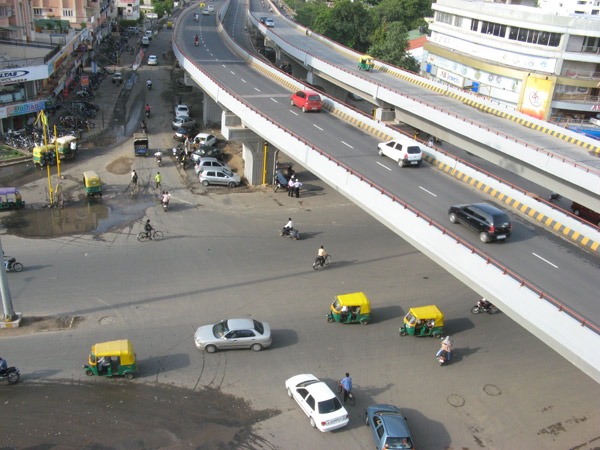
PATNA: For long, Bihar was considered a "Bimaru" state, what with extreme poverty, violence and corruption being considered synonymous with the state. But that is now history. The state is now on the fast track to shed its "Bimaru" tag, having achieved one of the highest GDP growth rates in recent years. The iconic changes have been ushered in by the Nitish Kumar-led government after it took over the reins in November 2005.
The metamorphosis has not gone unnoticed in the country and abroad. Now, Bihar is considered a state on the move, thanks to improvement in governance, law and order, infrastructure and financial discipline. "My first three priorities are governance, governance and governance," Nitish had once said. The stress on governance was primarily because of his finding that Bihar had suffered not because of bad governance but because of lack of it. After taking oath as the chief minister, he embarked on the journey of development with justice. "Till recently, it was beyond people's imagination that Bihar can embark on a trajectory of development, and that too on an inclusive and equitable one," said social scientist and economist Shaibal Gupta.
The economic profile of the state started changing since late 2005. Plan expenditure leapfrogged from Rs 4,000 crore in 2004-05 to Rs 24,000 crore in 2011-12. The annual growth rate of Gross State Domestic Product, which averaged 4.42% between 1999-2000 and 2004-05, jumped to 11.36% between 2004-05 and 2010-11. This growth rate and the consequent transformation in the economic profile of the state made the country sit up and take notice, since it had surpassed many developed states.
"Bihar's turnaround illustrates how a handful of seemingly small changes can yield big results in India's most impoverished and badly governed regions. Bihar is a textbook case of how leadership determines development," wrote the New York Times.
Development of roads in the state epitomizes this wind of change. When a foreign tourist, who has been visiting Buddhist places in the state for long, was recently asked about the most visible change, he said it was road. Bihar, for long, remained infamous for its bad roads and pitiable connectivity. People suffered due to utter lack of connectivity. Though the state is criss-crossed by several rivers, there were very few bridges across them, forcing people to make long detours to reach their destination just across the river.
"Roads and bridges are the visible signs of development as well as a basic component of the infrastructural development," said road construction department (RCD) minister Nand Kishore Yadav. The year 2010-11 witnessed a sharp increase in road length over the previous years in terms of per lakh of population. Still, Bihar has only 126.13km of roads per lakh population as against the national average of 322.77km.
RCD secretary Pratyaya Amrit said the road length was 94,009.42km in October 2010, which increased by 20% in 2011 to 1,12,733.58 km. "As of September 2011, there were nearly 1.13 lakh km of roads despite the fact that the length of national highways did not witness any change," he said. The silver lining in the road sector is that some projects under public-private-partnership mode have also started coming. Presently, work is under execution on a mega bridge on Ganga between Bakhtiarpur and Tajpur apart from 118-km-long four-lane road between Ara and Mohania, among others.
Bihar got another boost in road development when the Union home ministry sanctioned construction of 552 km roads in Bihar right along Bihar-Nepal border from Madanpur on UP-Bihar border to Galgalia on Bihar-West Bengal border. The Centre has agreed to sanction Rs 1,702 crore for the purpose and the project is to be completed by 2015-16. The total cost of the project will exceed Rs 2,552 crore.
Nitish said about the changing Bihar: "The state is experiencing all-round development because of our policy of ensuring that the benefits of development first go to those at the bottom of the social ladder. Over the years, we rose above the feelings of caste and religion, and have worked tirelessly on the agenda of inclusive development of the state."
Nitish believes in the maxim of "miles to go before I sleep". He once blogged, "I work 24x7 without a break, thinking often of the philosophy of 'aharnishamsevamahe (uninterrupted service day and night)'. I understand this will need to go on without any let-up, so that more and more people join hands to bring a brighter future."
"I am not fully satisfied with the work done. But one has to remain dissatisfied only to move ahead with vigour. I feel satisfied seeing the happy faces of people, who are now living without any fear. I feel happy to see village girls cycling to their schools," the CM once said. He is not satisfied as the per capita income of Bihar is one-third of the national average and one-seventh of that of New Delhi.
"This huge gap is a matter of serious concern and needs to be addressed at the earliest," he said, a tad worried.
No comments:
Post a Comment